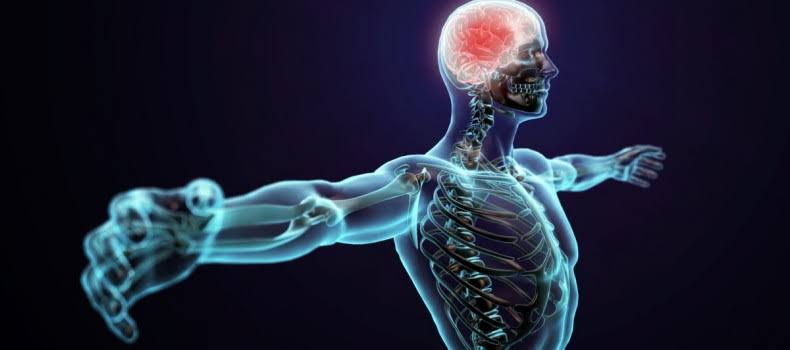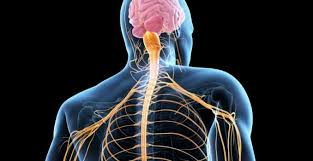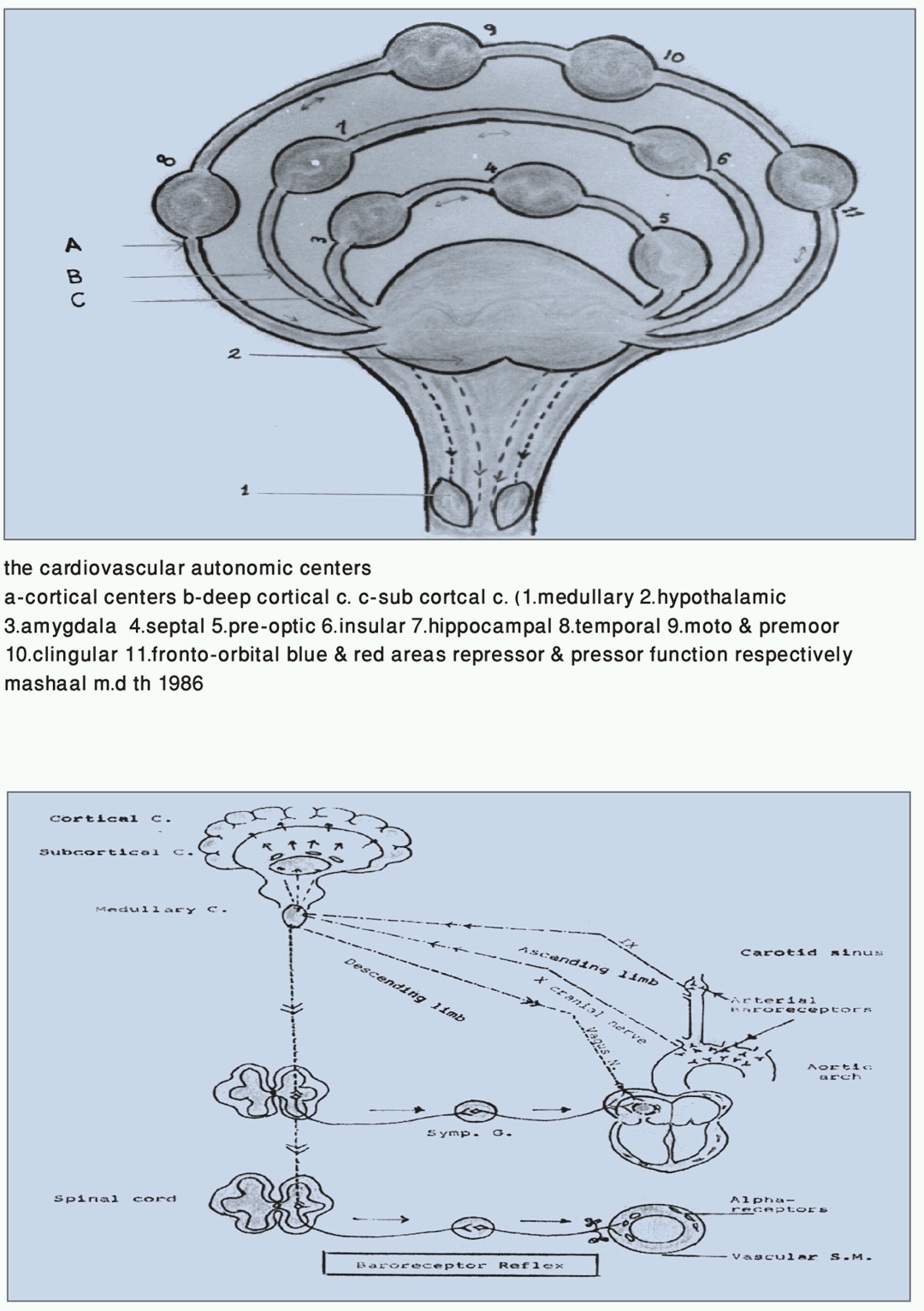Hypertension and autonomic nervous system
Date:
Monday, September 2, 2019
Hypertnsion and Autonomic Nervous System Function «HANS» study
Dr. Abd Elmoneim M. Mashaal MD
Professor of cardiology, National Heart Institute Embaba
Recently, there is a growing evidence about the major role of autonomic nervous system «ANS» not only in the genesis and perpetuation of essential hypetension but also in the associated metabolic dysfunction. This necessitate the need for reevaluation of the ANS function in subjects with elevated B.P.
The aim of the 1st part of this work is to study the baroreflex function in early prehypertension «Pre.H.» and in established hypertension «EH.» stages. The 2nd and 3rd parts studied the activity of the cerebral cardiovascular autonomic centers (C.V.A.C) activities and the peripheral adrenergic system in pre H. and EH. stages respectively.Part 4 recorded the associated cardiac systolic and diastolic functions and the structural changes echocardiographially.
The material of this study included 300 subjects with elevated B.P and 80 normaltensive subjects for comparison. The studied subjects were classified into 4 groups according to their baroroplex (P.P) response to change in posture. Group 1: included 80 normotensive ten rive subjects who exhibited normal decrease in P.P. on standing “control group». Group 2 included 130 subjects with elevated B.P and presented normal decrease in P.P. on standing «Prehypertension stage». Group 3 included 90 subjects with elevated B.P who demonstrated elevation in P.P i.e paradoxical response on standing (pre.H stage ıı). Group 4: comprised 80 subjects with elevated B.P and exhibited attenuated P.P response on standing. Each subject was exposed to the following physiologic tests: change in posture, valsalra maneuver, mental stress, cold pressor, hyperventilation tests. The pharmacological tests included: Isoprinaline infusion, propranolol infusion, atropine sulphste infusion and isosorbid dinitrite sublingually.
Our finding revealed that the low pressure sensitive baroreoptors function which is sympathetically medicated was intact in Pre. H. stages ı & ıı and the high pressure sensitive receptors function, which is parasympathetically mediated, is intact in Pre. H stage ı. and is attenuated in pre H. stage II due to central suppression. Both functions were greatly impaired in E.H.stage ııı.
Part 2. study revealed significant increase in the activity of the pressor more in stage ıı CVACS at cortical, sub-cortical and medullary levels.
The pyephral adrenergic system. study (part 3) demonstrated significant increase in ß1, adrenergic receptors sensitivity in pre hypertension stage ıı while it is attenuated in (E,H stage ıı», on the other hand the function of alpha 2 adrenergic raptors increased significantly in pre H. stage ıı. Which masked the activity of ß2 adrenergic receptors. The parasympathetic cholinergic receptors function were intact, and the resting parasympathetic outflow was normal in Pre. H. stage ı and even increased in Pre. H.stage ıı & E.H. stage ııı. The resting vascular tonicity increased in the three stages.
The Echo doppler study revealed signitficant increase in left ventral contraction systolic funcion (F.S) mainly in Pre. H.stage ı & ıı, due to exaggerated contractility of the septal wall (S.W) and Posterior wall (P.W), (P.W > S.W) the diastolic dysfunction of left ventral appeared in Pre. H. stage ıı & E.H. «stage ııı». (Reversed E/A ratio in stage ıı or ııı. and signficantly increase in (V.R.T.) in all stages.
The structural changes included significant increase in septa] and posterior wall thickness (S.W > P.W) and a significant decrease in right ventricular volume in E.H. «stage ııı. Correlation studies showed a significant +ve correlation between the increased cerebral CVAC activities in prehypertension and E.H stages and the increased contractility of S.W & P.W. of the left ventricle and also with the impaired diastolic function of the left ventricle.a
Inconcolusion, this study confirmed the important role of ANS in genesis and aggravation of essential hypertension. Also it revealed the value of utilizing the baroreflex function for determining the early stages of hypertention. Further more it demonstrated the cardiac functional and structural changes in various stages of hypertention which may be used as a diagnostic tool for assessing hypertension severity. In addition it may provide a rational approache for management of hypertension by the centrally acting drugs and the simultaneous use of alpha and beta-adrenergic blocking agent or agents.
the details of this comperhensive study which took more than 3 years to be established wiil be avalable in the near future.





 info@utopiapharma.com
info@utopiapharma.com
 Plot No. (2) Industrial Zone (A7) - formerly Zizinia - Cairo - Ismailia Road - 10th of Ramadan - Sharkia
Plot No. (2) Industrial Zone (A7) - formerly Zizinia - Cairo - Ismailia Road - 10th of Ramadan - Sharkia